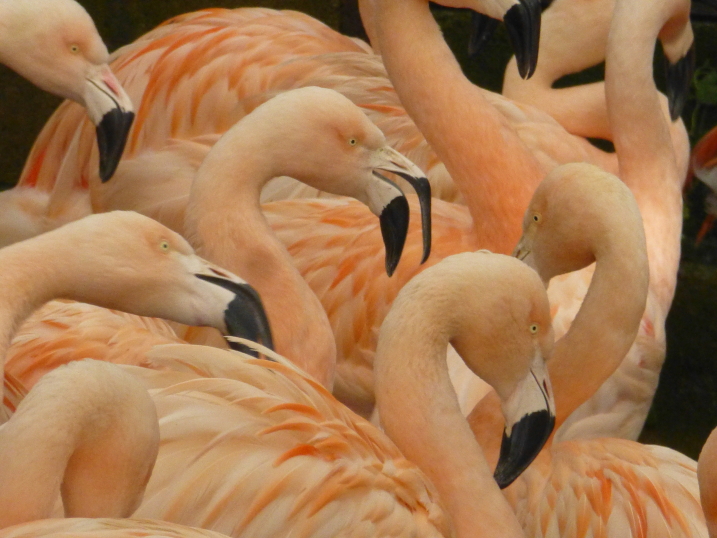Flamingos in lockdown
Welcome to the New Year flamingo fans. And another round of lockdown. For the WWT flamingos, like many birds up and down the country, it’s been lockdown for them too as the Avian Influenza outbreak means that we have to keep our birds safely inside out of harm’s way. The flamingos don’t generally mind being inside. In the winter, the birds are often housed indoors when there is bad weather and the large, heated houses that we have at WWT Slimbridge, and at the other WWT centres, that keep flamingos are ideal for keeping the birds snug, comfortable and out of the elements.
I love the sound in this video of the greater flamingo flock inside their enormous house. It's deafening and Phoebe and the living collections team wear ear protectors when they go and feed the birds and clean the house. With this many flamingos, it's a real wall of sound. But it also tells Phoebe and her colleagues that the birds are happy and well because this noisy group are doing their courtship dancing.
I’m no doubt sure that many of you are missing your favourite birds and you’d like to be able to visit them to see what they are up to. In this first flamingo diary of 2021, here is an update on some firm favourites and how they are being cared for.
Some of the kind things that the living collections team have to consider when the flamingos are kept inside are:
- Sand and rubber matting for healthy feet
- Clean water for preening and bathing
- Keeping the birds out of their pool water and in fresh water, if needed, to minimise disease risk
- Easy access to food for all birds in the group
- Lighting to resemble the "outside world"
- Heating for the species that have a tendency to feel the cold
- Space for everyone to be able to mix with their friends and avoid those they don't like as much.
Remember, if you are missing the WWT flamingos, then the flamingo adoption can bring you a little bit closer to these wonderful birds and help support their care over this difficult period.
In the photo below you can see the WWT Slimbridge Caribbean flamingo house and the flock outside, when conditions are normal.
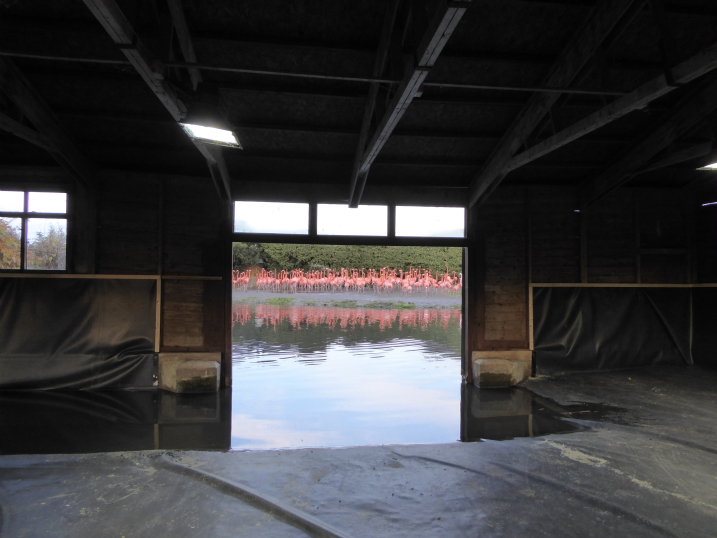
All of the flamingo houses have big, wide doors that allow the birds to move in and out of the house as a flock. Nobody gets left behind and nobody needs to panic because they can all travel with their friends. The houses have various layers of matting to keep the flamingo's feet healthy and sometimes sand too, if it's best for that species. Natural and artificial lighting mimic the normal daily cycle of light that the flamingos would experience if they were outside. And all flocks have pools inside their houses so they can maintain their beautiful feathers. Feather condition is really important because at this time of the year, in autumn and in winter, the flamingos are often moulting through from their worn out feathers from after the breeding season into a new set of bright pink feathers ready for their courtship displays.
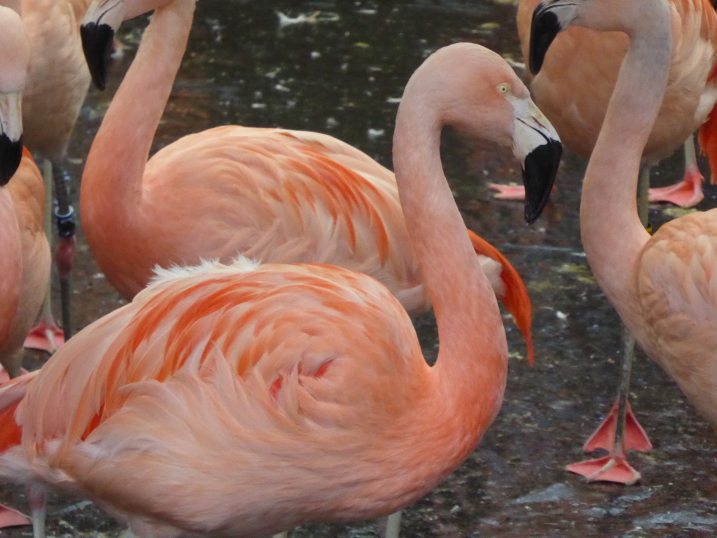
This photo shows the beautiful colours of a Chilean flamingo, that are freshly moulted through, and ready for the next breeding season in the coming summer. The birds are indoors but they still go through their normal activities.
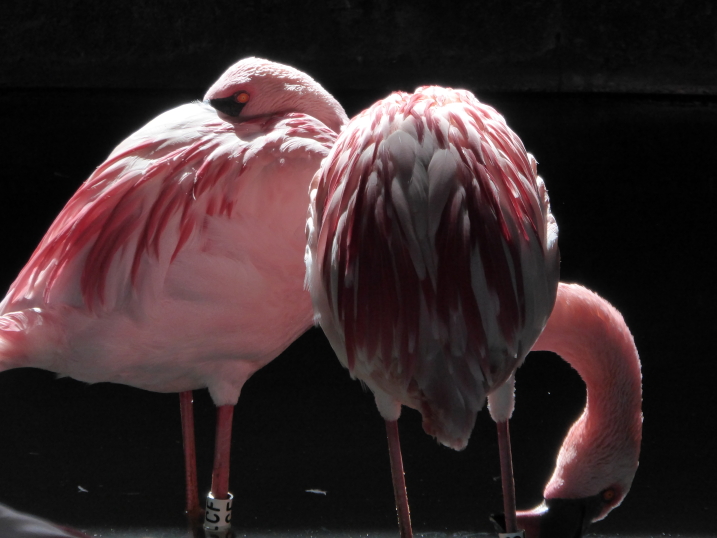
And here are two lesser flamingos, with their characteristic bright red scapular feathers (the long drooping feathers over their wings) that are a sign of an upcoming breeding season. It's important to give the flamingos all of the things they need to remain in tip-top condition when they are inside as this is a critical time of the year for them to prepare for nesting in the summer.
Here's another nice example of the behaviour of the birds being the same inside as they are outside. This is the lesser flamingo flock and you can hear the contact calls that are being exchanged between individuals in the flock. These whistles and grunts are asking whether or not other birds fancy starting some courtship dancing. Only when everyone feels that the time is right will the courtship display start.
Over the past couple of years, new lighting has been installed into the houses of the lesser and Caribbean flamingos at WWT Slimbridge to provide a light spectrum that is more natural and more similar to what the birds would experience in their natural habitats. Investing in the indoor housing is crucial and pays off at times like what we are currently living through, when birds are spending longer periods indoors.
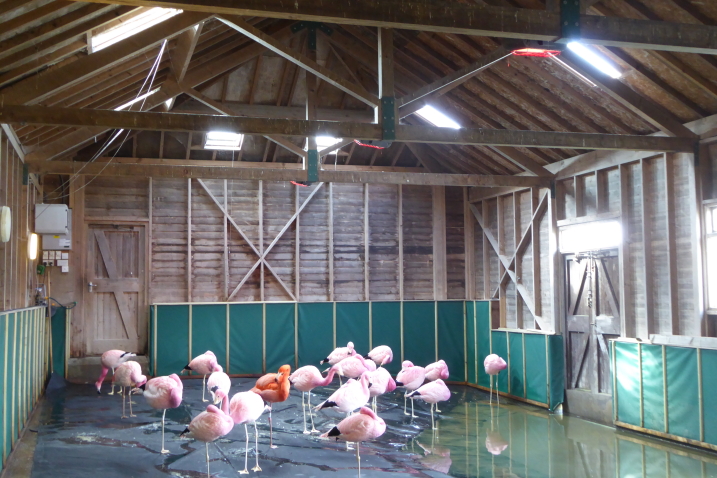
Here you can see the heaters used for the Andean flamingos and Mr James. Even though these species come from the chilly heights of the Andes Mountains in South America, its good to give them a bit of extra warmth in winter. As these birds are getting older, it helps keep them in good condition and means they don't need to expend lots of their own energy on keeping themselves warm. You can also see in this photo the importance of space. I am, of course, interested in flamingo friendships, and you can see this nicely illustrated here: the flamingos have plenty of room to stand with whom they would like and avoid those they don't want to be with. All birds can come out of the water and everyone has room to rest and preen in peace. As flamingos are so specific about who they like to be with, it's key to include this space within their housing.
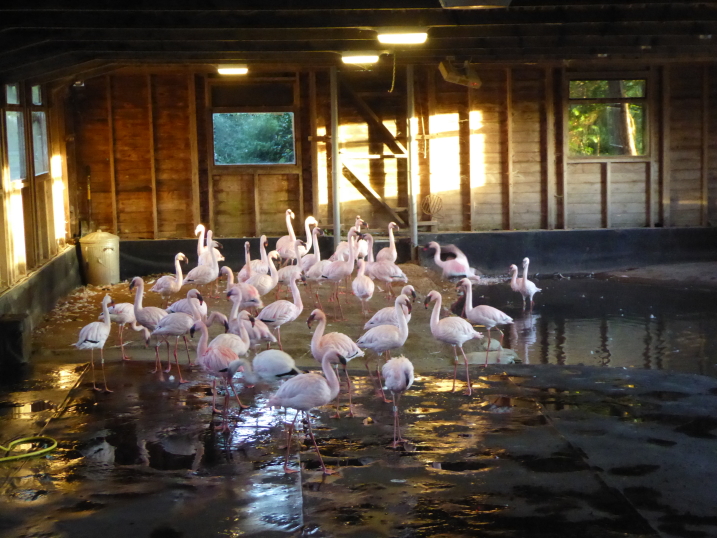
And here is the same for the lesser flamingo flock too. This photo is from a previous winter to give you an idea of their management. You can see the pile of sand that has been provided for the birds. Excellent for feet, excellent for enrichment too (giving the birds extra things to do) and it helps to encourage breeding activities. The lesser flamingos are also a species that likes to perform courtship display when inside, so these extra features (sand, heating, lighting) give the birds the opportunities to express these natural breeding activities which is great for their wellbeing.
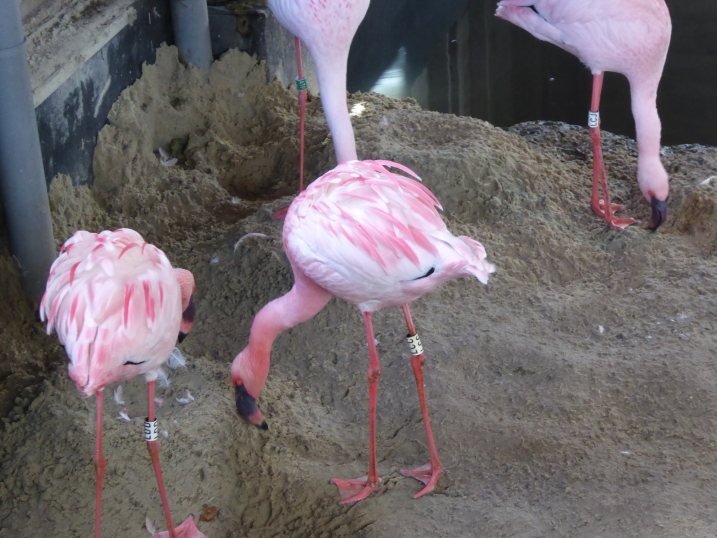
Here are some of the lesser flamingos playing around with the sand they have been provided with. You can see the deep pink colour of the birds, which is an indication that they are fit and well, and the fact that they have energy to spare to scrap around to play with nest mounds means they are being well looked after.
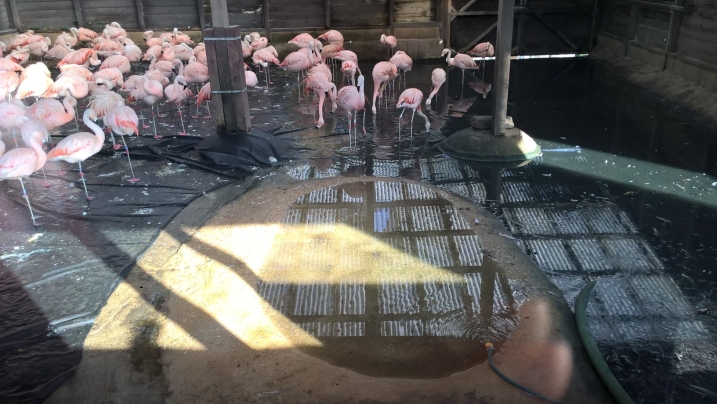
Of course it is extra work for Phoebe and the living collections team at WWT Slimbridge, and for the flamingo keepers at WWT Martin Mere, Washington and Llanelli too, as cleaning happens more regularly and feeding areas have to be scrubbed and filled with fresh water. You can see the cleaning of the Slimbridge Chilean flamingo house here whilst the birds are indoors. The flamingos can be kept out of their pool water and in separate, biosecure, mains water if needed to keep them extra safe over winter if required. But the effort is worth it when the flamingos can be eventually let out (let's hope that this is sooner rather than later) as they will be in their pinkest best and looking fantastic for the breeding season ahead. And fingers crossed that it won't be long before you can come and see them in person too!
